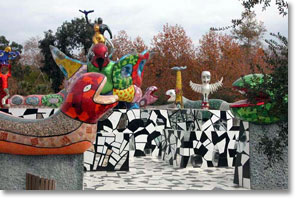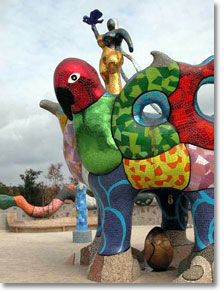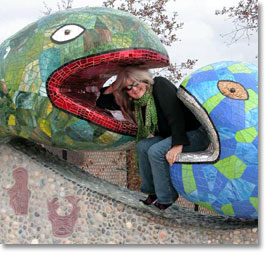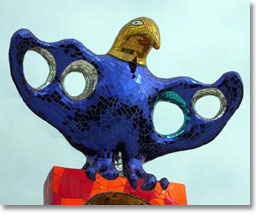Sankey Arboretum in Kit Carson Park, the late Niki de Saint Phalle (1930-2002) created a unique mosaic masterpiece, the only American sculpture garden of its kind and the last of her major international projects. Queen Califia’s Magical Circle, inspired by California ís mythic, historic and cultural roots, measures 120 feet in diameter and consists of nine large-scale sculptures, a circular, 400-foot snake wall and maze entryway, sculpturally integrated bench seating, an egg-shaped fountain and native shrubs and trees planted within the interior plaza and along the outer perimeter. The garden opened to the public on October 26, 2003.
The garden, like the state itself, takes its name from the legendary black Amazon queen, Califia, who was believed to rule a terrestrial island paradise of gold and riches. Queen Califia ís Magical Circle bears the brilliant, unique mosaic ornamentation that is an unmistakable part of Saint Phalleís later work. The garden uses a greater diversity of mosaic materials than any other of her large- scale projects. She personally selected dozens of varieties of glass of different shapes, color, hue, translucency and degrees of reflection. For the first time, she also used a wide assortment of polished and tumbled stones such as travertine, agates, quartzes and veined turquoise. The results are magical and ever changing, as the movement of light, wind, color and reflections continually transform the garden.
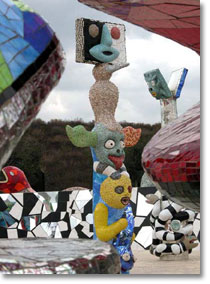
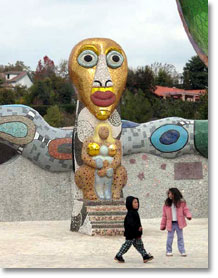
Niki de Saint Phalle was born in 1930 in Neuilly-sur-Seine, France, and raised in New York City. She began painting in 1948, moved four years later to Europe (Nice, Paris and Mallorca) and first came to international prominence in 1961 as a member of the influential New Realists,î a group that also included Christo, Yves Klein and Jean Tinguely (her frequent collaborator whom she married in 1971). Today, she is best known for her oversized, voluptuous female figures, the Nanas, which can be seen in cities and museums around the world. Among her large-scale installations are The Stravinsky Fountain near the Centre Pompidou in Paris (1983), The Tarot Garden at Garavicchio in southern Tuscany (which was entirely financed by the artist and opened after twenty-four years of work in 1998) and The Grotto in Hannove rís Royal Herrenhausen Garden (2003).
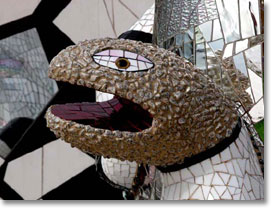
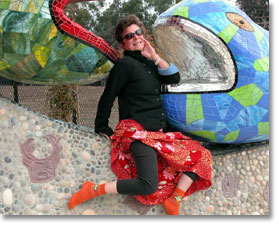
Saint Phalle continued living near Paris until 1994 when, for reasons of poor health (brought about by exposure to toxic fumes from polyester materials used in her early sculptures), she moved to La Jolla, California. ìCalifornia has been a rebirth for my soul and an earthquake for my eyesósea, desert, mountains, wide open sky, brilliance of light and vastness of space,î she once remarked. ìI have embraced another way of life, and have let my discovery of this landscape manifest itself in my work.
Always interested in expanding the audience for contemporary art, she created Queen Califia as a place for families to gather, play and engage with a visually rich world of ideas, symbols, and forms.
My first really big piece for kids was the Golem [completed in 1970 in Jerusalem] and three generations know and love it. Here [in Escondido], you can also touch the sculptures, Saint Phalle said in one of her last interviews. They feel nice and you won ít harm them. You can be a part of them ... it ís like a marriage between the sculptures and the child or adult. Maybe it brings out the child in adults, too.
Visit www.queencalifia.org
for additional details.
Tags: mosaic, Niki de Saint Phalle
